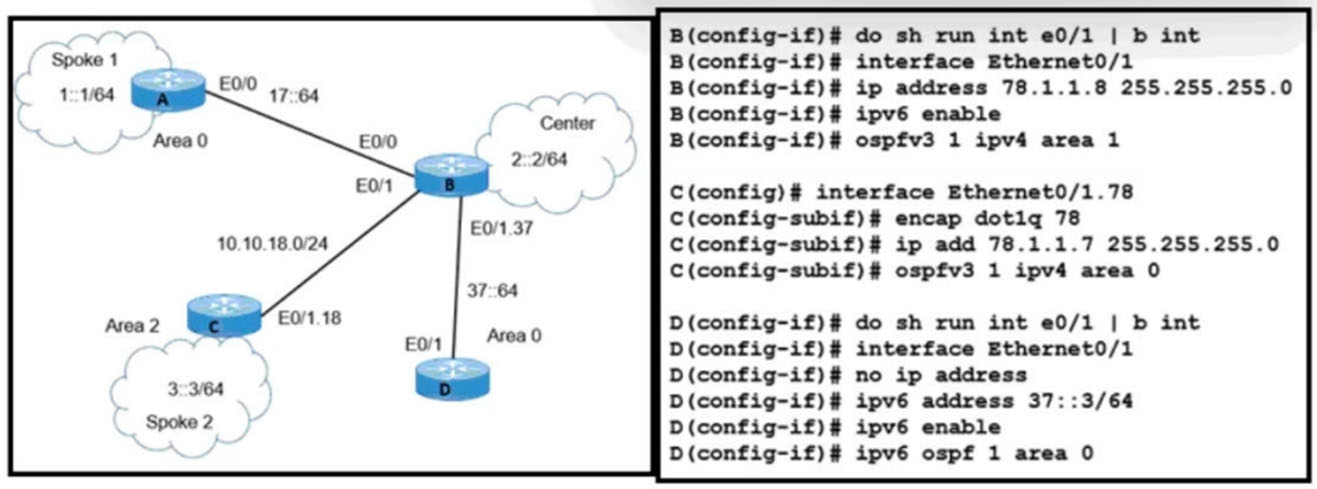
Refer to the exhibit. A network engineer receives a report that Spoke 1 users can perform bank transactions with the server located at the Center site, but Spoke 2 users cannot. Which action resolves the issue?

Refer to the exhibit. A network engineer receives a report that Spoke 1 users can perform bank transactions with the server located at the Center site, but Spoke 2 users cannot. Which action resolves the issue?
The issue arises from the use of OSPFv3, which is designed to support both IPv4 and IPv6. However, OSPFv3 requires IPv6 to be enabled on the interfaces, even if it is only being used to route IPv4 traffic. Router C's configuration shows that IPv6 is not enabled on the interface, which prevents OSPFv3 from functioning properly. Enabling IPv6 on the routers B and C interfaces will allow OSPF to work correctly and resolve the connectivity issue for Spoke 2 users.
using ospf v3 you need IPV6 enable
None of these answers would really fix the problem. Who writes these question! Absolutely terrible.
If it's this dumps are really valid, im really dissapointed with cisco, like the 90% of the questions at this question are horrible
Fucking idiotic question. It tests nothing in terms of knowledge. How do you apply for the job of making questions for Cisco exams, seems like an easy job…
I agree that this question is somewhat stupid, the interface will not even take the ospfv3 configuration command unless ipv6 is already enabled on the interface, not sure how they managed to display and interface config with the ospfv3 command already in place without the ipv6 enable ABR0-1(config-if)#ospfv3 1 ipv4 area 0 % OSPFv3: IPV6 is not enabled on this interface ABR0-1(config-if)#ipv6 enable ABR0-1(config-if)#ospfv3 1 ipv4 area 0 ABR0-1(config-if)#^Z
Badly written question? Cannot understand what would be a valid option. Any ideas, someone?
Agree with ChillingAgain can someone explain this question?
So many problems to see here! Area-Mismatch, maybe an encapsulation mismatch and yes also IPv6 is also an problem here. But none of the answers make sense in this case!
My guesses: The connecting routers should have one leg in OSPF area 0. Certainly, the interfaces for connection B-C should be in OSPF area 0, and that is missing on Router B. All interfaces in IPv6 OSPFv3 domain should have an IPv6 address, and that is missing on Router C. For me it looks like a frame relay topology, so probably the encapsulation should be frame relay.
Answer "B". abd123 is right, "ipv6 enable" is missing for ospfv3.
That is the most bizarre and stupid question I have ever read.
B is corerct because of ospf v3